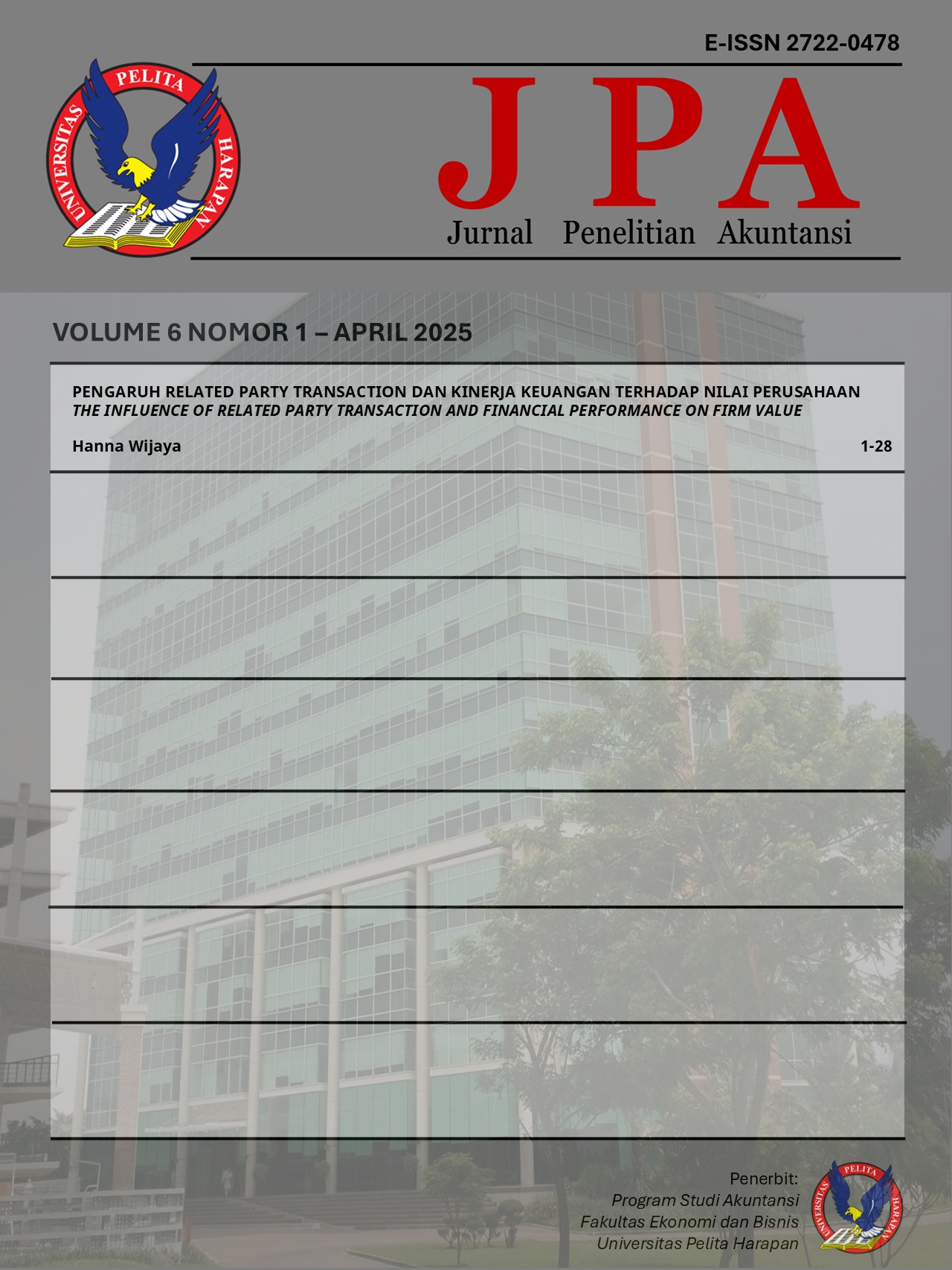THE EFFECT OF CAPITAL STRUCTURE AND SALES GROWTH ON FINANCIAL DISTRESS WITH PROFITABILITY AS A MODERATING VARIABLE: EVIDENCE FROM INDONESIA MANUFACTURING FIRMS
Λέξεις-κλειδιά:
Capital Structure; Sales Growth; Profitability; Financial Distress; Altman Z- Score; IndonesiaΠερίληψη
This study examines the impact of capital structure and sales growth on financial distress, with profitability as a moderating variable. Using 326 firm-year observations from 84 Indonesian manufacturing companies in the consumer discretionary and consumer staples sectors (2019–2023), logistic regression and moderated regression analysis were applied. The findings show that the debt-to-equity ratio and sales growth significantly increase the likelihood of financial distress, while profitability reduces it. In contrast, the debt-to-asset ratio has no significant effect, and profitability does not moderate the effects of capital structure or sales growth. These results provide evidence for the inconsistent findings in prior studies and highlight the need for managers to balance leverage, growth, and profitability to reduce financial risk.
Keywords: Capital Structure; Sales Growth; Profitability; Financial Distress; Altman Z- Score; Indonesia
Αναφορές
Akmalia, D. (2020). Profitability, leverage, and financial distress of manufacturing companies in Indonesia. Jurnal Akuntansi, 12(1), 15–28.
Altman, E. I. (1968). Financial ratios, discriminant analysis and the prediction of corporate bankruptcy. The Journal of Finance, 23(4), 589–609.
Deliana, S. (2023). Profitability, leverage, and financial distress: Evidence from Indonesian listed firms. Asian Economic and Financial Review, 13(5), 377–390.
Hidayat, R., Santoso, A., & Sari, Y. (2020). Profitability and leverage as predictors of financial distress. Jurnal Akuntansi dan Keuangan, 22(2), 85–96.
Indrawan, B., & Sudarsi, S. (2023). The effect of capital structure and firm growth on financial distress. Jurnal Riset Akuntansi Indonesia, 26(1), 17–29.
Jensen, M. C., & Meckling, W. H. (1976). Theory of the firm: Managerial behavior, agency costs and ownership structure. Journal of Financial Economics, 3(4), 305– 360.
Kusnadi, D., Utami, H., & Putri, M. (2023). Capital structure and financial distress: Evidence from Indonesian capital market. International Journal of Economics, Business and Accounting Research, 7(3), 221–232.
Myers, S. C., & Majluf, N. S. (1984). Corporate financing and investment decisions when firms have information investors do not have. Journal of Financial Economics, 13(2), 187–221.
Naibaho, H., & Natasya, R. (2023). Leverage, profitability, and corporate financial distress. Jurnal Ilmu dan Riset Akuntansi, 12(6), 1–15.
Oktaviani, D., & Lisiantara, M. (2022). Sales growth and financial risk: Evidence from Indonesia. Jurnal Ekonomi dan Bisnis, 25(3), 215–227.
Purba, A., Manurung, H., & Siahaan, T. (2024). The paradox of sales growth and financial distress in emerging markets. Jurnal Manajemen dan Bisnis Indonesia, 14(2), 66–80.
Rahmawati, R., & Qudus, M. (2023). Firm growth and financial performance: The moderating role of profitability. Jurnal Akuntansi Kontemporer, 11(1), 55–70.
Setyowati, L., & Sari, N. (2019). Sales growth, profitability, and financial distress of listed firms. Jurnal Keuangan dan Akuntansi, 8(2), 41–50.
Widhiastuti, T., & Pradnyani, A. (2024). Profitability as a determinant and moderator of financial distress. Jurnal Akuntansi dan Bisnis, 19(2), 98–112.
Δημοσιευμένα
Τεύχος
Ενότητα
Άδεια
Πνευματική ιδιοκτησία (c) 2025 Kania Syahra Noor, William Tjong

Αυτή η εργασία είναι αδειοδοτημένη υπό το Creative Commons Attribution-ShareAlike 4.0 International License.
Authors who publish with this journal agree to the following terms:
1) Authors retain copyright and grant the journal right of first publication with the work simultaneously licensed under a Creative Commons Attribution License (CC-BY-SA 4.0) that allows others to share the work with an acknowledgement of the work's authorship and initial publication in this journal.
2) Authors are able to enter into separate, additional contractual arrangements for the non-exclusive distribution of the journal's published version of the work (e.g., post it to an institutional repository or publish it in a book), with an acknowledgement of its initial publication in this journal.
3) Authors are permitted and encouraged to post their work online (e.g., in institutional repositories or on their website). The final published PDF should be used and bibliographic details that credit the publication in this journal should be included.


